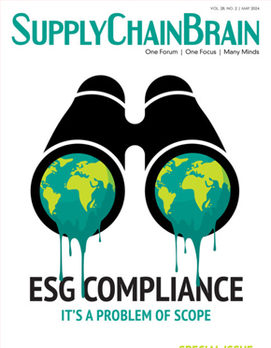
Two years into the pandemic, businesses around the world have come to realize just how delicate supply chains can be. Numerous tech contenders have responded with the promise of solving problems for manufacturers and distributors that are contending with these logistical nightmares.
Robots driven by artificial intelligence are perhaps the most popular example of this trend. They’re alluring and easy for the public to visualize. But that doesn’t mean they’re the answer for all operations within the supply chain.
It's software analytics, based on AI, that will prove the most effective solution for factories and warehouses. Their current state of chaos can’t be solved simply by throwing more bodies (or machines) at the problem. AI software designed to see patterns and determine inefficiencies must become commonplace. While not as sexy as an R2D2-like robot performing tasks in the warehouse, the technology will prove to be a force multiplier for the currently stretched-thin workforce.
Deploying AI is also the way forward to maximizing efficiencies across the supply chain, through faster data analysis, continual process optimization, and supply and demand forecasting capabilities. These goals are achieved via two key strategies:
- Better management of supply chain data. Data and analytics from multiple silos and systems can provide organizations with real-time insight into overall performance and logistics activities. Yet most organizations today are operating with systems where the data is either blind or unstructured, preventing intelligent use that would impact the supply chain. The answer lies in effective management of the data that’s captured, maintained and continuously used.
- AI-enabled supply chain. AI offers the opportunity to significantly improve the speed and accuracy of supply chain operations by correlating historical data with external trends that impact production. It allows manufacturers and retailers to continuously capture valuable information from operations, and retain institutional knowledge. Managers can rely on this information to build a more intelligent, agile and demand-centric supply chain. In the process, they can better manage inventories, minimize operating costs and offer improved service to their customers.
To bring about better outcomes for both individual workers and companies, it’s crucial that companies deploy models based on predictive analytics that are user-accessible. High license fees and complex analytical tooling designed for PhD data scientists create barriers and put the value of AI out of reach for many teams. Now, however, data science software is becoming democratized and universally accessible, tearing down the barrier to entry.
Predictive models reduce the knowledge gap and create a more efficient decision-making process. As a result, both technical and non-technical managers can approach their daily supply chain objectives differently, with a more critical eye on what transpires along the way, as well as previously undiscovered patterns and inefficiencies. By bringing these realities to the forefront, they can combat them with an array of solutions, by brainstorming with teams or utilizing the AI platform to run alternative simulations.
The way forward for supply chains is through more intelligent, data-driven decision-making. Companies can maximize productivity across the operation and acquire a greater sense of the optimal processes. It’s one thing to have a general understanding that a supply chain practice is inefficient. It’s another to have clear-cut analytics to back up those suspicions and drive substantive change.
Tuncay Isik is co-founder and chief executive officer of Prevision.io.



.jpg?height=100&t=1715228265&width=150)



